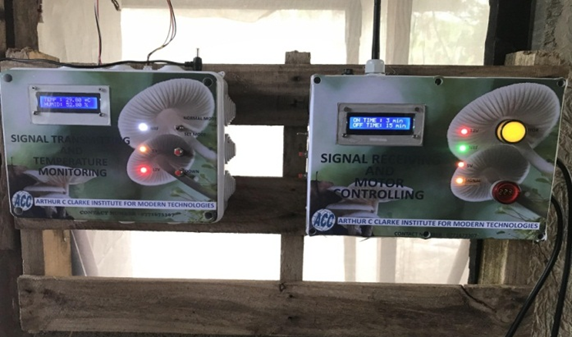Temperature Monitoring/Controlling System for Poly Tunnel

With the increase of population, the land has become a limitation for agriculture and not sufficient for crop production to yield to tackle the ever growing demand. Also the unpredictable rainfall distribution patterns have become a major obstacle to the limited production available at the mean time causing the price fluctuations.
As a method to overcome this major ever increasing problem, now poly tunnel system has become popular among the farmers of Sri Lanka. This system also has the potential to attract the youth to engage in agriculture due to many availability of modern technology applications. Another concept is urban farming using poly tunnels on top of their buildings which is growing more popular and necessary to support urban populations’ needs regarding the availability of nutritious food.
Although polytunnels protect crops from external bad weather, high temperature and humidity during summer months cause adverse effect on crop production. Generally in Sri Lanka, the average yearly temperature as a whole is ranging from 28 to 35oC. The mean temperature varies from low of 16ºC in Nuwara – Eliya in the Central Highlands, where even frosting might occur for several days in the winter, to a high of 350C in Trincomalee on the northeast coast. Thus, in such regions, reduction of air temperature inside the polytunnels or the regulation of temperature close to the ambient temperature is highly important to protect the crops from pests, to yield crops with good quality, and to support the growth of plants.
A selection of appropriate technology for temperature monitoring and controlling depends on the crop to be grown, maintenance, ease of operation and economic viability. Hence development of applicable technologies is an important research endeavor. As a first step here in ACCIMT, a research is carried out to design a modern feasible cost effective technique to monitor and to maintain a steady temperature level inside the poly tunnel; with the success of it, further it will try to design an appropriate polytunnel (shape, size and roof configuration) with a right choice of cladding material coupled with suitable ventilation and temperature controlling.
